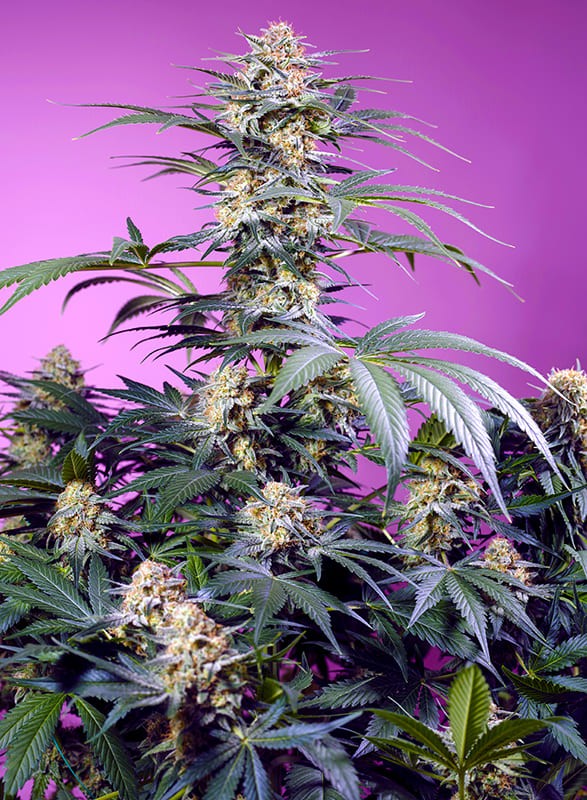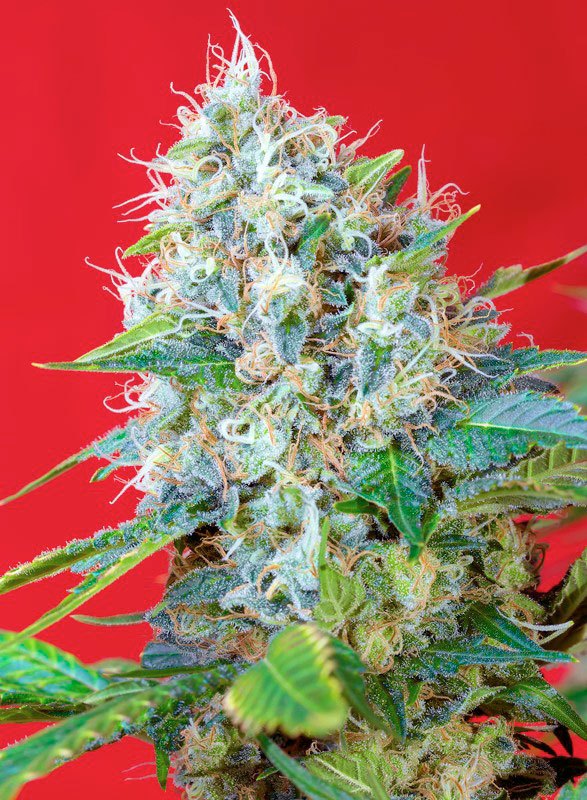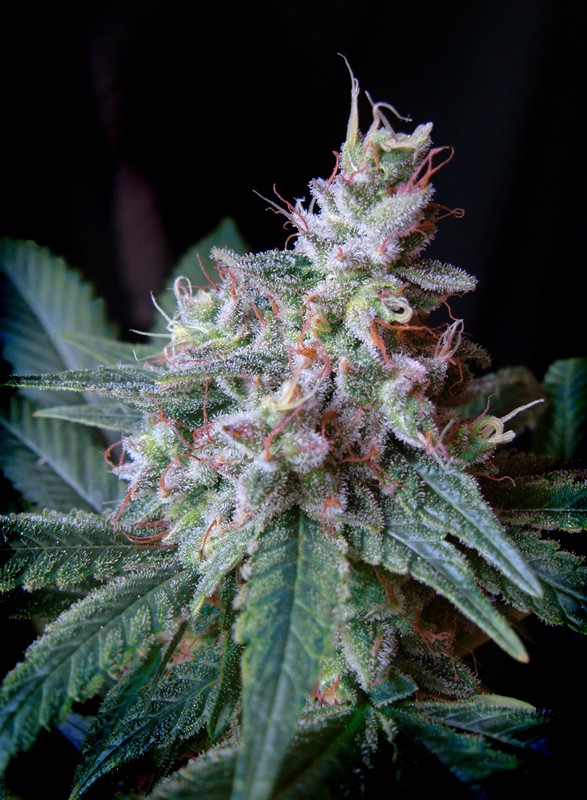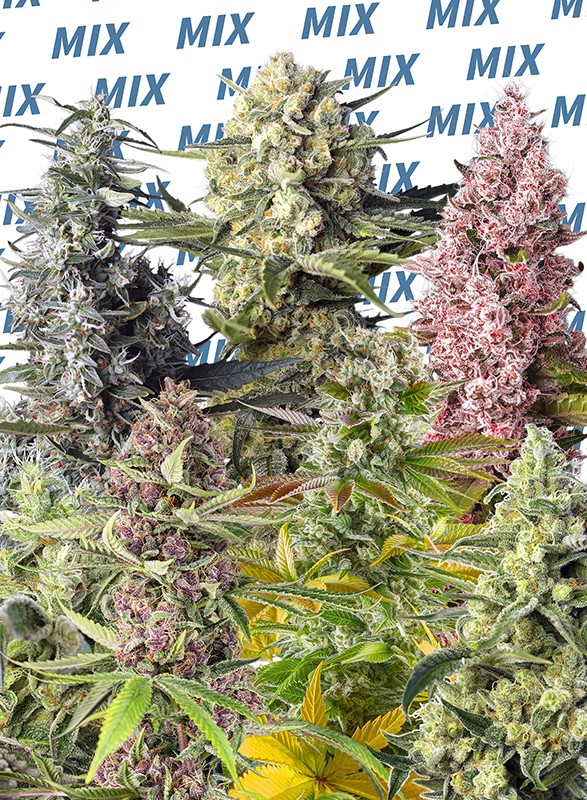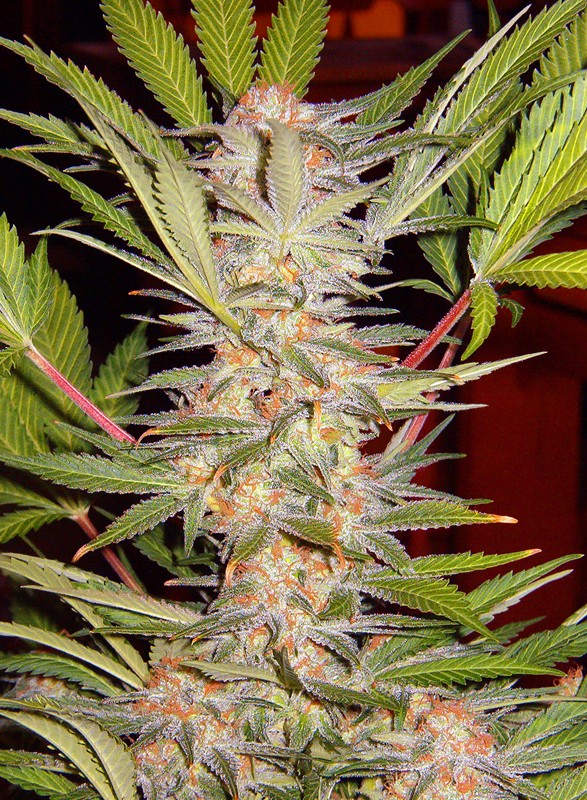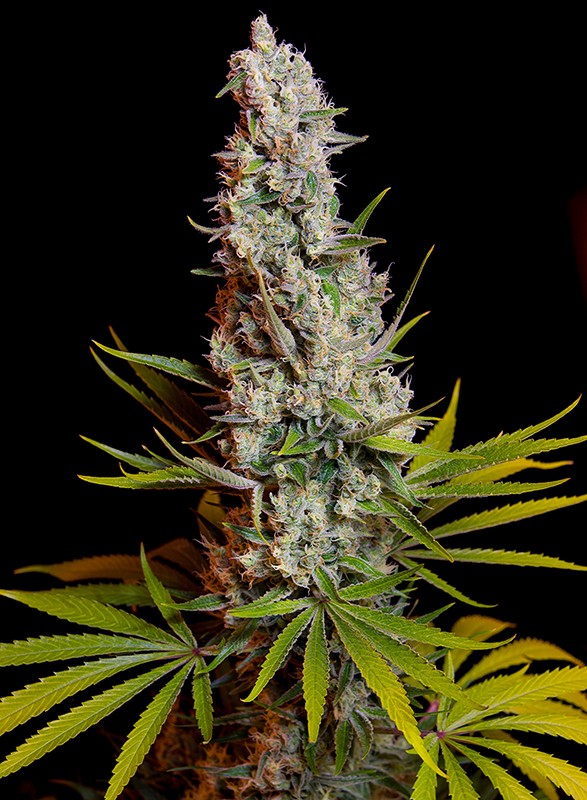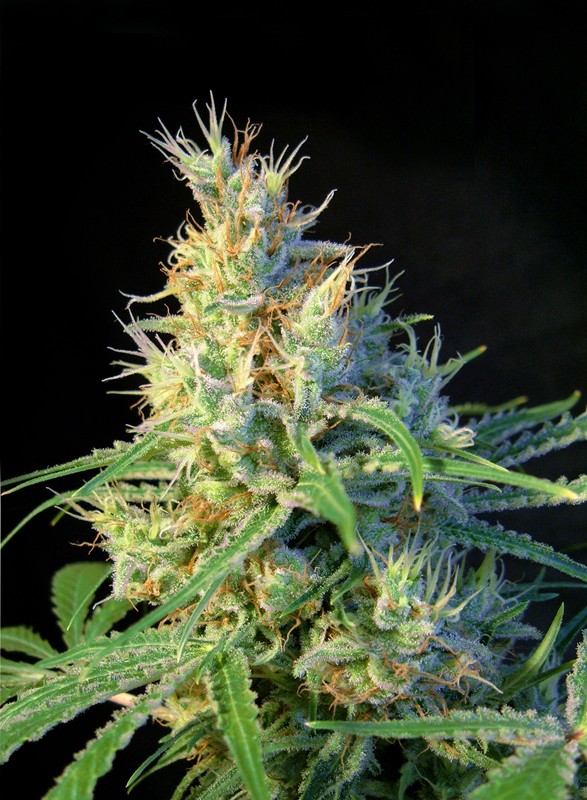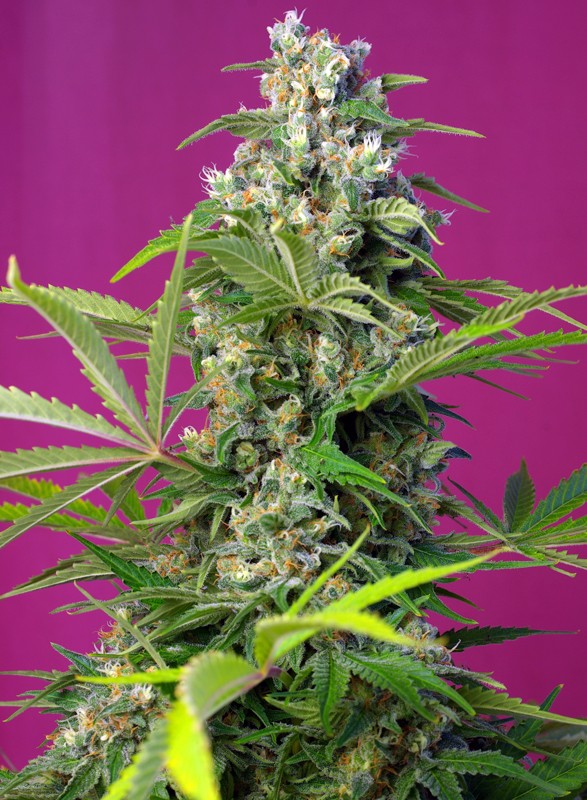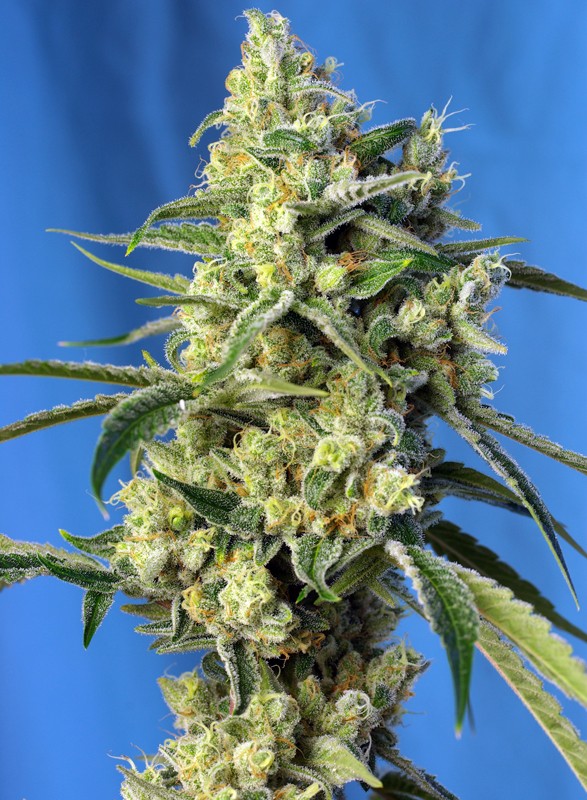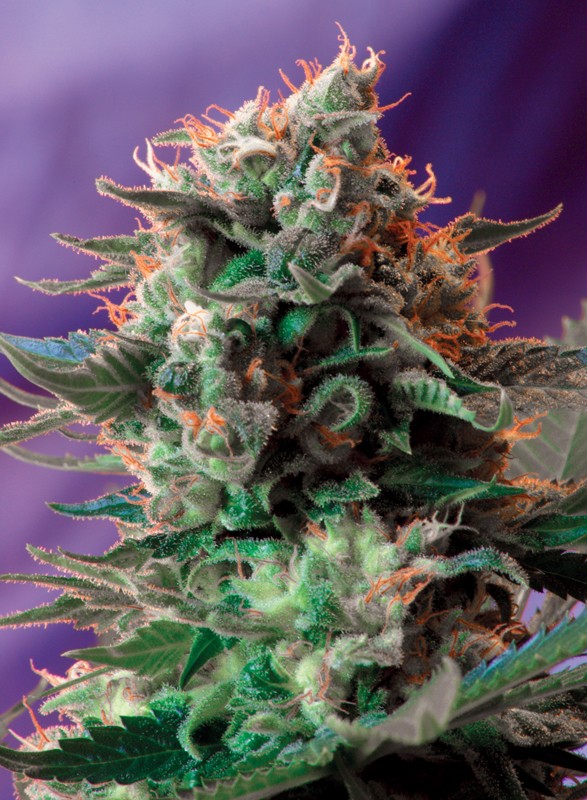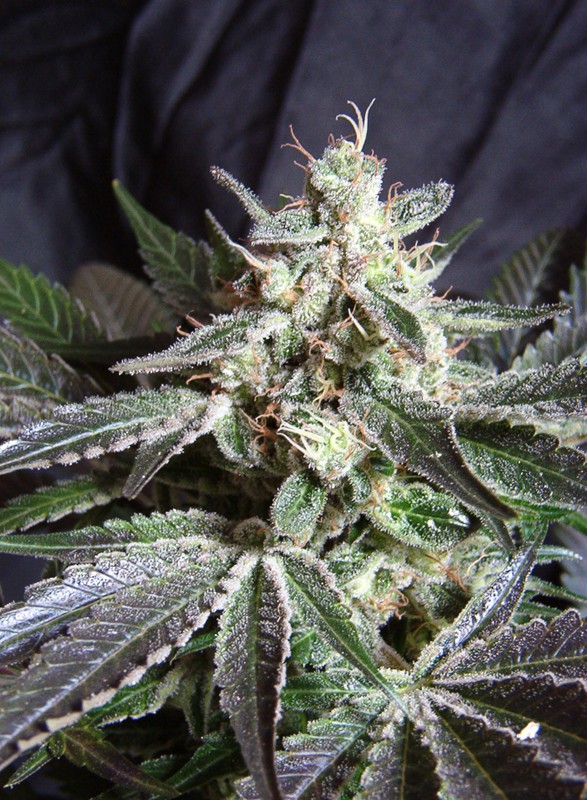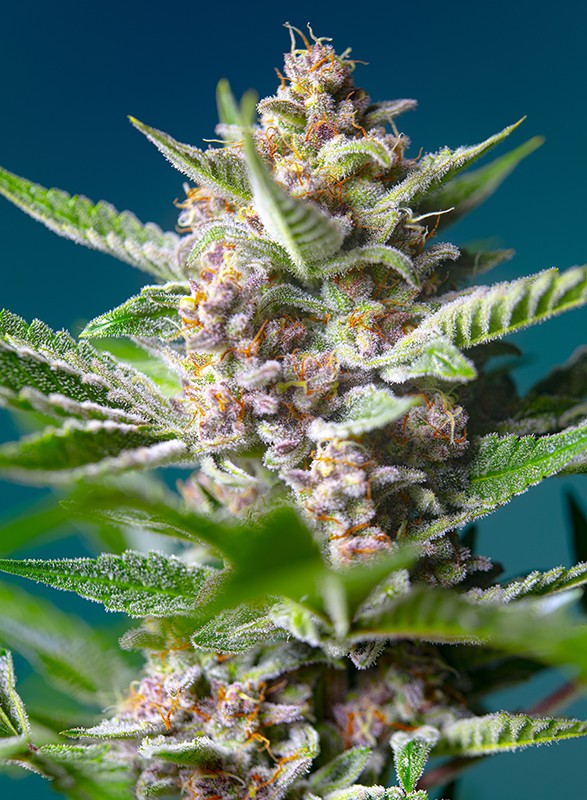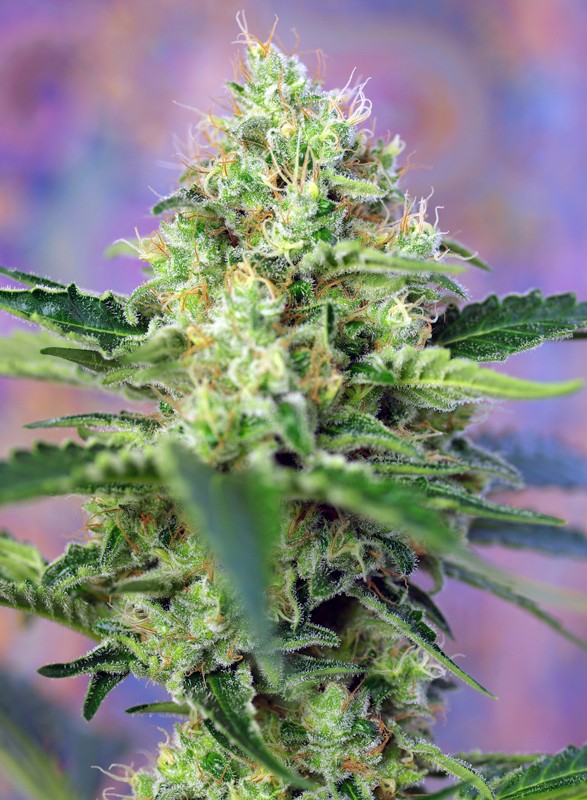To develop this genetic line, we used a classic breeding method applicable to allogamous or partially allogamous species, such as cannabis. These types of cultivars are referred to in genetic terminology as Synthetic Varieties (S.V.).
Cream Caramel® (SWS04) is the result of the balanced combination of several of our best Indicas, chosen for their excellent agronomic, botanical, and chemotypic qualities, such as production, type and intensity of aromas, type and intensity of effects, plant structure, short flowering periods, trichome density, resistance to diseases, negligible tendency to hermaphroditism, and above all, their strong aptitude for producing outstanding hybrids.
To create our Cream Caramel®, we used three foundational lines: a Blue Black hybrid (Blueberry '99 x Black Domina '98) developed by the Sweet Seeds®’ R&D department, an outstanding Maple Leaf Indica with wonderful Afghan genetics, and a White Rhino that represents the most Indica-leaning and medicinal side of this renowned Dutch polyhybrid. Using these three parental lines, we created a balanced population consisting of an equal number of individuals from each parental line. These groups of plants were isolated into three different spaces to avoid self-pollination and to promote cross-pollination, maximizing heterosis or hybrid vigor. Thus, each line was allowed to intercross only with the other two parental lines.
The seeds from this first generation were harvested and mixed in equal numbers from the three pollination chambers, forming what we will call the SV1 generation, which contains all possible hybrid combinations of the foundational lines.
This SV1 generation was then allowed to freely cross-pollinate within isolation to prevent the introduction of foreign pollen, leading to crosses in all directions of all possible hybrid combinations (SV2). In this second generation (SV2), the seeds were formed from the random combination of gametes from all three parental lines. This population is panmictic, in equilibrium, and all subsequent generations will be identical to it under free pollination and no selection, as gene frequencies remain constant.
For the following generations, up to SV5, we applied "Mass Selection" by choosing a sufficiently large number of parental plants that displayed agronomic traits of interest to form the next generation, instead of leaving the process entirely to chance.
Cream Caramel® is a S.V. that, like hybrid strains, aims to improve hybrid vigor and provide uniformity to the offspring, while also fixing the most desirable traits through selection in successive generations. After five generations of free pollination and selection, the result is Cream Caramel®: a highly stable and productive strain with intense flavor and abundant resin. It is highly adaptable to unfavorable conditions and environmental challenges (cold, drought, etc.) due to its broad genetic bandwidth, which gives Cream Caramel® exceptional flexibility to adapt to its environment, even greater than that of F1 Hybrids.
To produce Cream Caramel®, as with all photoperiod-dependent cannabis seeds from Sweet Seeds®, we did not use males for pollination. Instead, modern sex reversal techniques were applied to selected female plants, resulting in a Synthetic Variety with approximately 99.9% female offspring.












